HTML, which stands for Hypertext Markup Language, is the standard markup language used for creating web pages and applications. It provides the structure and layout for the content on a webpage, including text, images, links, and multimedia elements. HTML is the backbone of the internet and is essential for web development.
HTML is important in web development because it allows developers to create structured and organized content that can be easily understood by web browsers. It provides a standardized way to format and present information on the web, ensuring consistency across different devices and browsers. Without HTML, websites would not be able to display content in a structured manner, making it difficult for users to navigate and interact with the information.
In addition, HTML is the foundation for other web technologies such as CSS (Cascading Style Sheets) and JavaScript. CSS is used to style and design the appearance of HTML elements, while JavaScript is used to add interactivity and functionality to web pages. Together, these three technologies form the core building blocks of modern web development.
Understanding the basic structure of an HTML document
An HTML document consists of several components that work together to create a webpage. The basic structure of an HTML document includes the doctype declaration, html element, head element, and body element.
The doctype declaration is placed at the very beginning of an HTML document and tells the browser which version of HTML is being used. It is important to include this declaration to ensure that the webpage is rendered correctly.
The html element serves as the root element of an HTML document. It contains two child elements: the head element and the body element. The head element contains meta information about the webpage, such as the title of the page, character encoding, and links to external stylesheets or scripts. The body element contains the actual content of the webpage, including text, images, links, and other elements.
HTML tags are used to define the structure and content of a webpage. Tags are enclosed in angle brackets (<>) and come in pairs: an opening tag and a closing tag. The opening tag is used to indicate the beginning of an element, while the closing tag is used to indicate the end of an element. For example, the opening tag for a paragraph is
and the closing tag is
. Everything between these tags is considered part of the paragraph.
Creating headings, paragraphs, and lists in HTML
Headings are used to define the hierarchy and structure of a webpage. HTML provides six levels of headings, ranging from
(the highest level) to
(the lowest level). Headings are important for search engine optimization (SEO) as they help search engines understand the content and context of a webpage.
Paragraphs are used to group together blocks of text. To create a paragraph in HTML, you simply wrap the text within
tags. Paragraphs are automatically formatted with some spacing before and after them, making them visually distinct from other elements on the page.
Lists are used to present information in an organized and structured manner. HTML provides two types of lists: unordered lists (
- ) and ordered lists (
- tags.
Adding links and images to your HTML page
Links are used to navigate between web pages or different sections within a webpage. In HTML, links are created using the anchor tag (). The href attribute is used to specify the URL that the link should point to. For example, Example creates a link that points to “https://www.example.com” and displays the text “Example” as the clickable link.
Images are used to enhance the visual appeal of a webpage and convey information through visuals. In HTML, images are inserted using the image tag (
). The src attribute is used to specify the URL of the image file, while the alt attribute is used to provide alternative text for the image. The alt text is displayed if the image fails to load or if the user is using a screen reader.
Formatting text with HTML tags
HTML provides several tags for formatting text and adding emphasis to certain words or phrases. The bold tag () is used to make text bold, while the italic tag () is used to make text italicized. These tags can be nested within each other to create different combinations of formatting, such as bold and italic.
The underline tag () is used to underline text, while the strikethrough tag (
) is used to add a line through text. These tags can be used to indicate deleted or outdated information.The superscript tag () is used to display text in a smaller size and above the baseline, while the subscript tag () is used to display text in a smaller size and below the baseline. These tags are commonly used for mathematical equations or chemical formulas.
Understanding HTML attributes and how to use them

HTML attributes provide additional information about an element and are specified within the opening tag of an element. Attributes consist of a name and a value, separated by an equals sign (=). For example, the href attribute in an anchor tag specifies the URL that the link should point to.
Common attributes in HTML include:
– id: Used to uniquely identify an element on a webpage. This attribute is often used in CSS and JavaScript to target specific elements.
– class: Used to group elements together for styling or scripting purposes. Multiple elements can have the same class.
– style: Used to apply inline styles to an element. Inline styles override external stylesheets and should be used sparingly.
– src: Used to specify the URL of an external resource, such as an image or a script.
– alt: Used to provide alternative text for an image. This text is displayed if the image fails to load or if the user is using a screen reader.Creating tables and forms in HTML
Tables are used to display tabular data in a structured manner. In HTML, tables are created using the table tag (
). The table element contains several child elements, including the tr element (table row), th element (table header), and td element (table data). The tr element represents a row in the table, while the th element represents a header cell and the td element represents a data cell.
Forms are used to collect user input on a webpage. In HTML, forms are created using the form tag (
- ). Unordered lists are used when the order of the items does not matter, while ordered lists are used when the order of the items is important. Each item in a list is wrapped within

